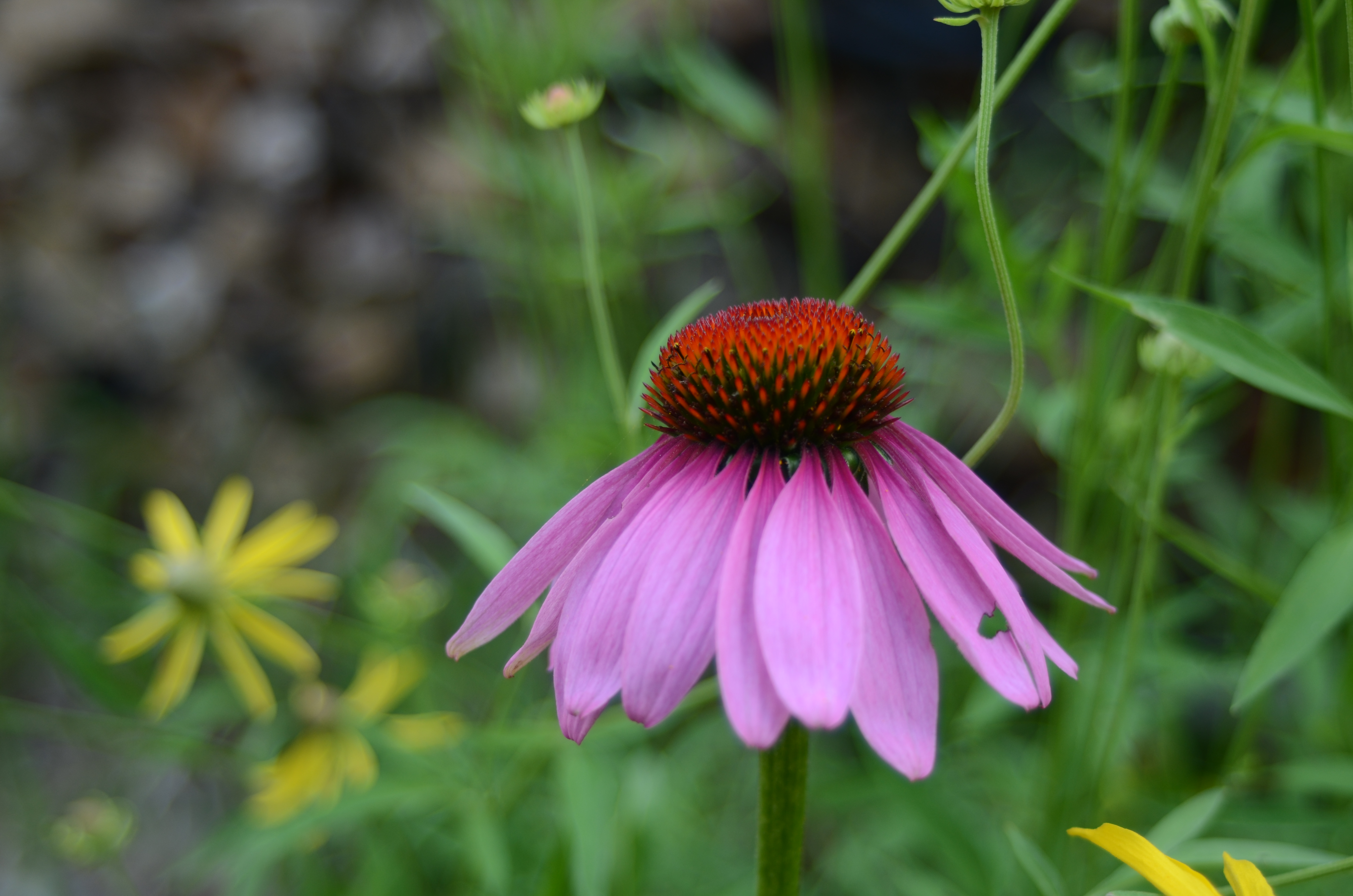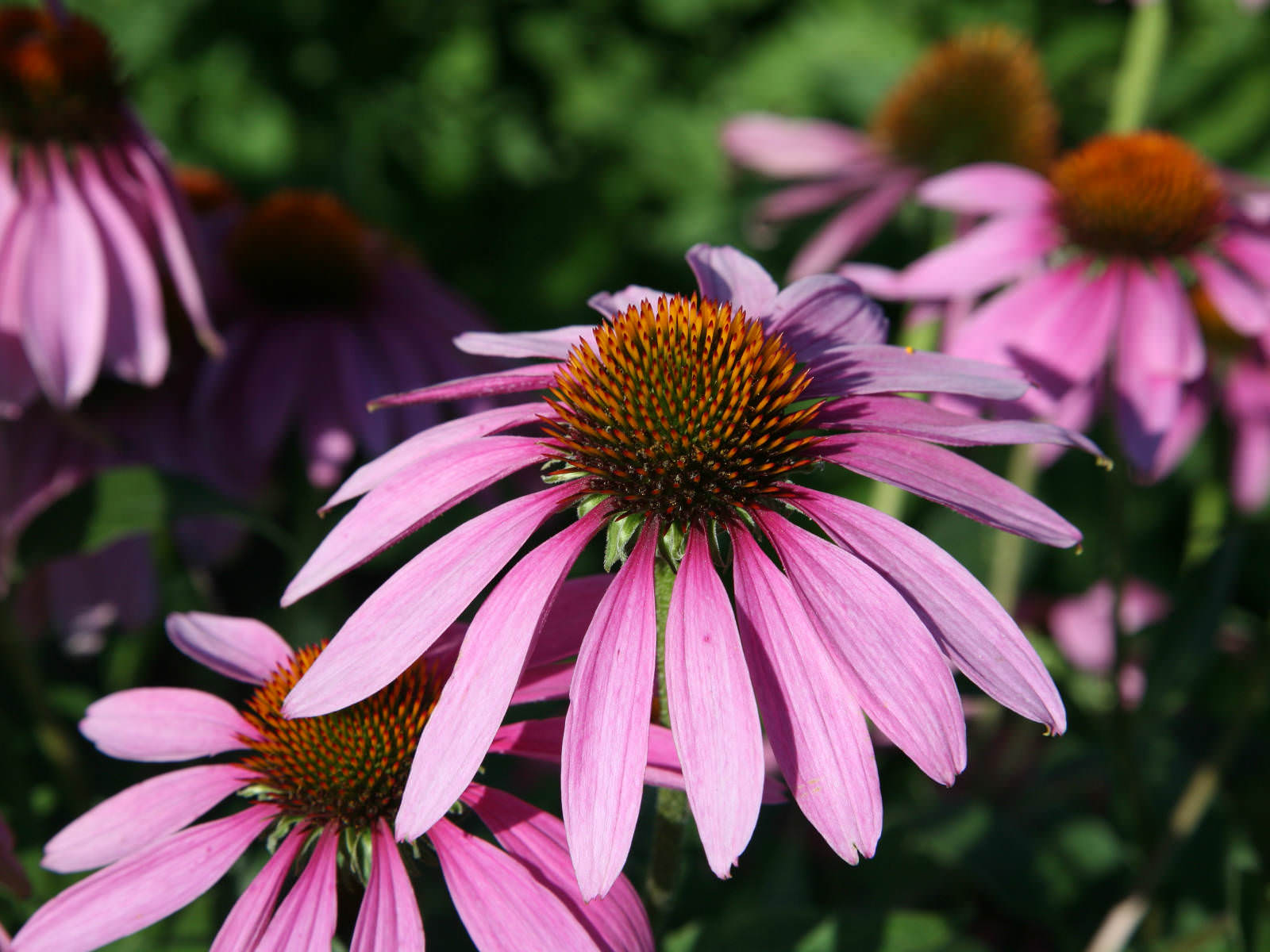
purpurea is a good candidate for arid and semi-arid regions with limited water resources. purpurea is more drought tolerant than E. Catalase (CAT), peroxidase (POD), and superoxide dismutase (SOD) antioxidant enzymes activity increased at severe drought stress. The highest amount of electrolyte leakage, malondialdehyde (MDA), total sugars, and proline was observed in E. A reduction of protein content and antioxidant capacity were observed in both species during severe drought stress. In this study, leaf carotenoid and anthocyanin contents increased, while the total chlorophyll content decreased under severe drought stress. purpurea under 75% FC treatment (37 days). angustifolia under 50% and 25% FC treatment, but the longest flowering period recorded in E. In addition, flowering was not observed in E. Drought stress significantly affected flower stem length, flower longevity, flower diameter, and flower anthocyanin in both species. angustifolia showed more sensitivity than E. Growth indices such as shoot and root dry and fresh weight, were reduced at lower FC in both species, but E. To evaluate the effects of drought stress on Echinacea purpurea and Echinacea angustifolia seedlings at the four-leaf stage, an experiment was conducted with four levels of irrigation regimes: 25%, 50%, 75%, and 100% of field capacity (FC) in a CRD based factorial experiment with three replications.

We conclude that the procedures described here could be used for rapid propagation as well as genetic transformation of commerically cultivated Echinacea species.ĭrought is one of the most important environmental stressors that limit plant's productivity. The presence of cytokinin was required for somatic embryo germination, but further development of germinated somatic embryos into normal plantlets occurred in Murashige and Skoog medium. Culturing of hypocotyl explants on medium containing 3,6-dichloro-o-anisic acid (commonly known as dicamba), or 2,4-dichlorophenoxyacetic acid, resulted in direct somatic embryogenesis in all the species examined. Rooting of in vitro developed shoots was achieved relatively easily with Murashige and Skoog basal medium rather than with auxin-enriched media.

Direct, high-frequency shoot formation on intact leaves of shoots grown on 6-benzylaminopurine and kinetin-supplemented media, an unusual and novel observation made in this study, occurred in all the species studied. Incorporation of paclobutrazol in the shoot multiplication medium was necessary to recover healthy and robust shoots suitable for rooting. Shoot tips obtained from in vitro germinated seedlings, adventitious shoots or somatic embryo-derived plantlets, when cultured on Murashige and Skoog medium enriched with 1 μM 6-benzylaminopurine, 2 μM kinetin, 0.5 μM indole-3-butyric acid and 4 mg-1 paclobutrazol multiplied three-fold within 3-4 weeks in culture. purpurea were regenerated by three methods, namely axillary bud proliferation, adventitious shoot formation and somatic embyrogenesis. Key words: In vitro propagation Purple coneflower DOI: Tropical Agricultural Research and Extension 13(2) 2010 pp.29-32Įfficient in vitro procedures for mass propagation of four commercially important Echinacea species have been deveoped. Through this culture system, it was possible to obtain at least one million plantlets ready for transplantation within one year. It was found that explants taken from plantlets of different maturity had different adventitious bud regeneration ability, with those from two and a half months old plantlets having the highest regeneration ability, and with root explants having the highest number of adventitious buds regenerated.

In the system, adventitious buds were first regenerated from leaf, petiole and root explants of aseptic seedlings on MS medium with 0.3 mg/l BA and 0.01 mg/l NAA, and then these adventitious buds were rooted and grown into more mature plantlets on MS media with 0.01 mg/l NAA for providing more explant materials for a subsequent adventitious bud regeneration culture. United States Department of Agriculture (Natural Resources Conservation Services).An efficient in vitro propagation culture system was developed for purple coneflower. ( Univeristy of Texas at Austin ), Available from Natvie Plant Database.

Retrieved from 2) Echinacea purpurea (l.) moench. Extracts from the roots can boost your immune systemġ) Christman, S.Region of Origin: Eastern United States USDA Plants Hardiness Zones: 4-8 Growth Habit: Herb Classification: Angiosperm, dicot Family: Asteraceae Common name: Purple Coneflower


 0 kommentar(er)
0 kommentar(er)
